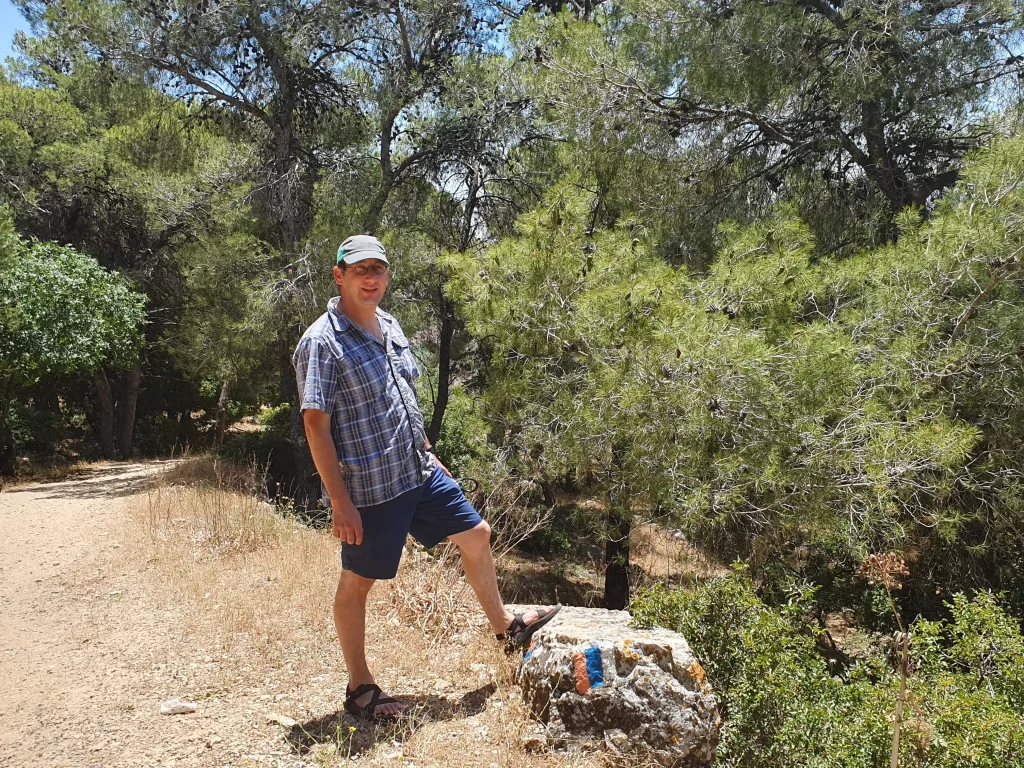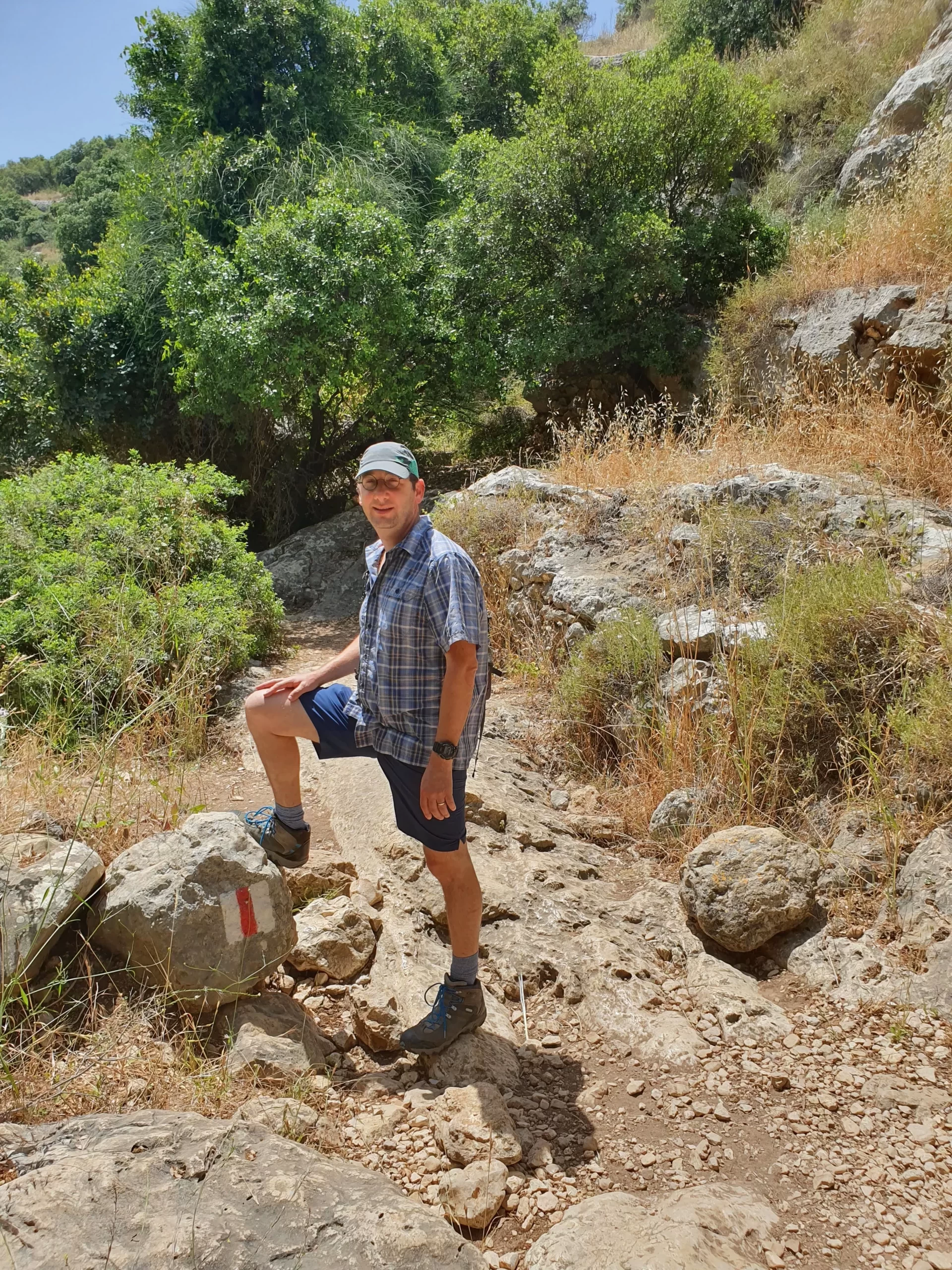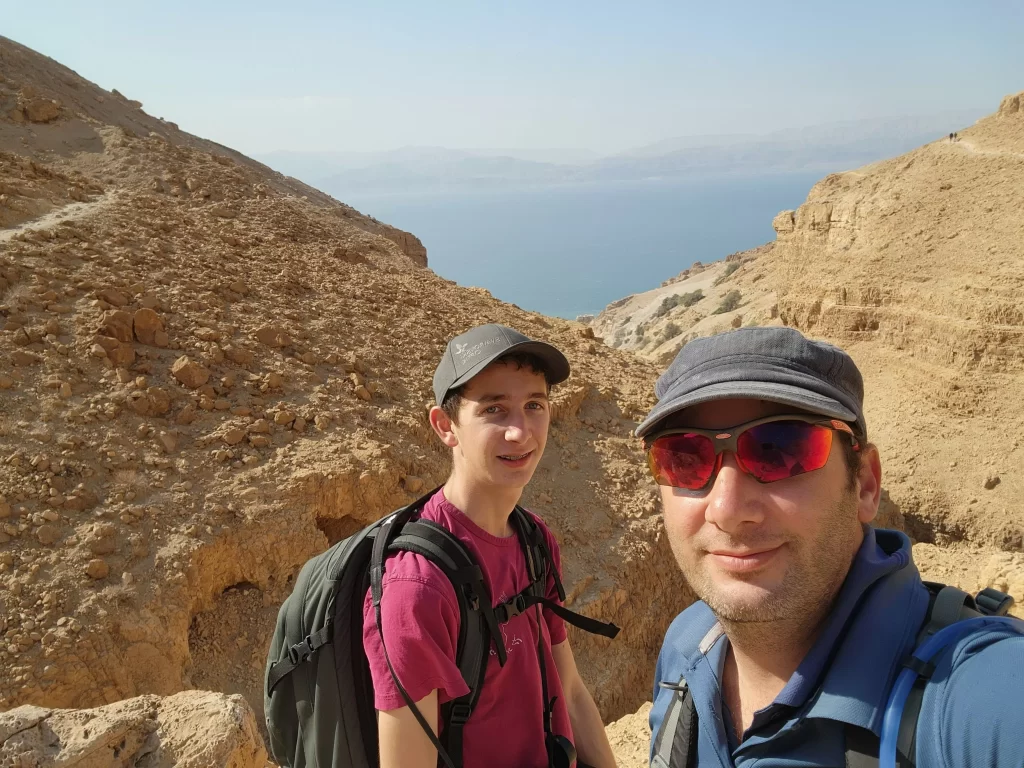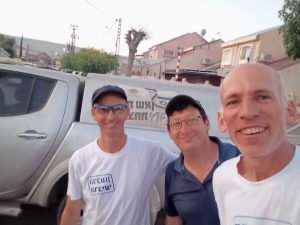I have come to know my land and its people… Derech HaRaglayim. Derech HaRaglayim is a Hebrew expression that literally translates to: “Through the feet” but truly means to learn via physical and experiential experiences. Derech HaRaglayim doesn’t always mean walking and hiking, but rather to use all of the senses, to create intellectual, emotional, and meaningful experiences. Derech HaRaglayim is a physical method that opens minds and hearts. Derech HaRaglayim is an interaction between the individual and his or her surroundings. It begins the moment you get up and start a journey. Whether it is a new path or one you have taken before… each time is a new learning experience that leaves an imprint on you, whether you are aware of it or not.
It’s kind of funny, because in the army, many times the term is used literally. Much of the training that soldiers (combat soldiers, in particular) receive includes running, walking, marching and other physical maneuvers. There are two types of Derech Haraglayim experiences that every soldier tries to avoid. The first is the discipline kind, where you are punished with extra running, marching, carrying (schlepping) and other hardship in order to teach you what it means to be a soldier with superiors, commanding officers, and orders you must obey. The second is when you are navigating and surprisingly you realize you don’t know where you are. Fortunately, it is an exercise. Three hours late and an additional 15km traversed… And you promise to yourself that this will never happen again; you have learnt your lesson the hard way – Derech HaRaglayim. I have experienced both, as have most combat soldiers at some point during their training.
This type of learning is something we inherited as a People from our forefathers. As Abraham was promised the land for himself and his future generations, he was ordered by God to “Arise, walk about the land, through its length and its breadth, for I give it to you.” (Genesis 13, 17). Walking the land is not just experiential learning, but taking real ownership over it. It is an effective act of acquisition as taught by Rabbi Eliezer: “Through what means does the public acquire the thoroughfare they choose?”
“By means of walking, as it is taught: if one walked along a field’s length and its breadth, he has acquired the area inside where he walked…” What is Rabbi Eliezer’s reasoning? As it is written: “Arise, walk through the land, its length and its breadth; for I will give it to you” (B. Talmud, Baba Bathra 100A). In addition, walking the length and breadth of the land of Israel is acquiring a place in the world to come, as taught in the name of Rabbi Yohanan: “Anyone who walks four cubits in Eretz Yisrael is assured of a place in the World-to-Come.” (B. Talmud, Ketubuot 111a). In reality, walking a land is not a viable way of transaction and obtaining ownership, but Derech HaRaglayim, is by all means a viable and important means of taking personal responsibility over one’s relationship with the land of Israel, its people and culture. Through Derach HaRaglaim, one deepens their physical, mental and emotional attachment to the land. This creates a deeper bond – a form of ownership.
Many have understood this and have taken up the habit of walking the land. Pilgrims, visitors, and tourists have flocked to the land to stand on it, walk it, and get acquainted with it. Explorers and researchers across a wide spectrum of disciplines have traveled from far and wide to reveal its secrets. Youth, families, and friends have spent time together enjoying its terrain.
The Palmach, the underground striking forces of the Haganah; the Jewish defense organization of the yishuv; the Jewish population in British Palestine… All took up the tradition of journeys, Masa, across the land. These masaout, journeys, became part of the social definition of the unit – a unique event in the life of the Palmach. Initially, they were part of the training of the individual and the unit, and a challenge to be proud of once completed in peace. But above all, during the journeys they would study the land through visits and tours of sites that were scattered across the country and contained various topics related to the Jewish history of Israel. Derech HaRaglayim was the way to deepen the relationship to the land and take ownership over the private and collective Zionist attachment to Eretz Israel.
Zionist legend and hero Joseph Trumpeldor once said: “Wherever the Jewish plow plows its last furrow, that is where the border will run.” Traveling up and down the country, one cannot help noticing that Israeli farmers cultivate the land all the way up to the borders. This is true around the Gaza Strip, on the northern Galilee borders with Lebanon, on top of the Golan Heights with Syria, and along the Jordan and Arava Valleys boarding the Hasmaite Kingdom of Jordan. For Israelis, whether or not they are farmers, this is a form of taking physical ownership over the land. I would hate to think what our national attachment to these areas would be if they had been left barren.
Yoram Taharlev, Israeli prominent poet and lyricist wrote in his famous 1980 song Kum VeHithalech BaArets: “Get up and tour the country. In his lyrics, Taharlev encourages Israelis to get to know their country, their land – Derech HaRaglyim. Born in Kibbutz Yagur in 1938, Taharlev felt he needed to make sure the torch was passed on to the next generation. All my kids learned this song during elementary school, and we sing it like an anthem as we set out on our hikes.
We are fortunate that this legacy has been passed down and is very present within today’s Israeli culture. It is manifested in school field trips, youth movement programming, outings and summer camps, special activities within various employment retreats, organized by labor unions and HR departments, pensioner groups, family outings and many others. Year-round you can find individuals and groups exploring the country, hiking, and following the colorful markings that make up our national trail system. Today, more than ever, young people before and after their army service, are taking-up the challenge to crossing Israel by hiking Shvil Israel, The Israel National Trail. Its orange, blue and white markings lead hikers on an approximately 1100 KM (683 mile) hike, from the Northern border of Israel all the way to its southern border on the Gulf of Eilat. While crossing the country, hikers are exposed to all the land has to offer, its natural, geographic, and topographic wonders, its ancient and modern history, its ethnic, social and cultural spectrum. It is a true experiential way to get to know the country and its people, Derech Haraglyim.


Personally, I see myself as having quite a a track record with the Land of Israel, the State of Israel, and its people. I have hiked its trails and walked its streets. I have seen breathtaking views of its mountain peaks and top floors of its skyscrapers. I have shared short Chet chats and deep conversations with random people on street corners and camp sites. I have eaten its food and drank its beverages and bathed in its hot sun. I was never the one to count the kilometers (milage), but rather one who takes it all in… the type who strives to figure out and know what each mountain, flower, and wall I pass is all about. I am a people person and make conversation with every good person I meet on my journeys – Anashim tovim, be’emtza haderech.
So, while I am out, the combination of the land and its people make the perfect Derech Haragliyim experience for me, and help me maintain and deepen my love, knowledge and devotion to this ever changing and dynamic land. Israeli Poet Shaul Tchernichovsky said “A man is but the imprint of his native landscape.” While I walk the land of Israel – Derech Haraglyim, I open my heart and my mind to the land, hoping it will leave a mark on me, and in return it opens its paths for my feet leaving my mark, my footprints wherever I go.




